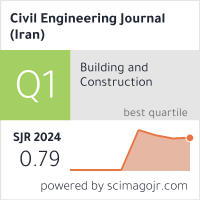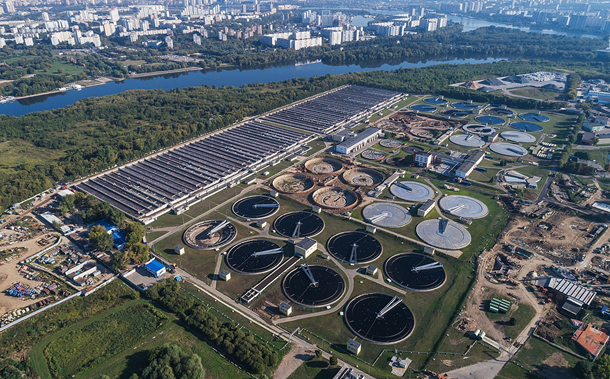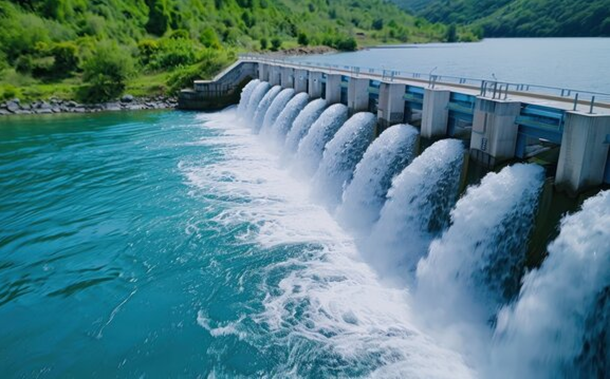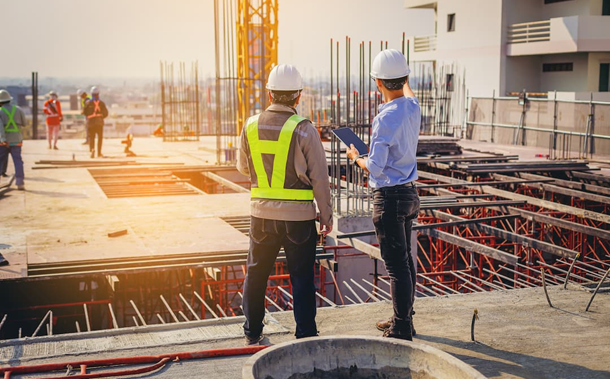Correlation of Methylene Blue Value with the Behavior of Natural and Stabilized Expansive Soils
Downloads
Doi:10.28991/CEJ-2025-011-05-020
Full Text:PDF
Downloads
[2] Jones, L. D., Jefferson, I., Burland, J., Chapman, T., Skinner, H., & Brown, M. (2012). ICE manual of geotechnical engineering. Volume 1, Geotechnical engineering principles, problematic soils and site investigation. The National Academies of Sciences, Engineering, and Medicine, Washington, United States.
[3] Jalal, F. E., Xu, Y., Jamhiri, B., Memon, S. A., & Graziani, A. (2020). On the Recent Trends in Expansive Soil Stabilization Using Calcium-Based Stabilizer Materials (CSMs): A Comprehensive Review. Advances in Materials Science and Engineering, 2020. doi:10.1155/2020/1510969.
[4] Zhang, C., Wang, W., Zhu, Z. D., Li, N., Pu, S. Y., Wan, Y., & Huo, W. W. (2022). Triaxial Mechanical Characteristics and Microscopic Mechanism of Graphene-Modified Cement Stabilized Expansive Soil. KSCE Journal of Civil Engineering, 26(1), 96–106. doi:10.1007/s12205-021-0778-2.
[5] Chen, F. H. (2012). Foundations on Expansive Soils. Found on Expansive Soils. Elsevier Scientific Publishing Company, Amsterdam, Netherlands. doi:10.1139/t89-099.
[6] Holtz, R. D., Kovacs, W. D., & Sheahan, T. C. (2010). An Introduction to Geotechnical Engineering. Prentice-hall, Hoboken, United States.
[7] Nelson, J. D., Chao, K. C. (Geoff), Overton, D. D., & Nelson, E. J. (2015). Foundation Engineering for Expansive Soils. John Wiley & Sons, Hoboken, United States. doi:10.1002/9781118996096.
[8] Nelson, J., & Miller, D. J. (1997). Expansive soils: problems and practice in foundation and pavement engineering. John Wiley & Sons, Hoboken, United States.
[9] Faezehossadat, K., & Jeff, B. (2016). Expansive Soil: Causes and Treatments. I-Manager's Journal on Civil Engineering, 6(3), 1. doi:10.26634/jce.6.3.8083.
[10] Abdollahi, M., & Vahedifard, F. (2021). Model for Lateral Swelling Pressure in Unsaturated Expansive Soils. Journal of Geotechnical and Geoenvironmental Engineering, 147(10), 04021096. doi:10.1061/(asce)gt.1943-5606.0002605.
[11] Gourley, C. S., Newill, D., & Schreiner, H. D. (2020). Expansive soils: TRL's research strategy. Engineering Characteristics of Arid Soils. CRC Press, Boca Raton, United States.
[12] Nayak, N. V., & Christensen, R. W. (1971). Swelling characteristics of compacted, expansive soils. Clays and Clay Minerals, 19(4), 251–261. doi:10.1346/CCMN.1971.0190406.
[13] Mitchell, J. K., & Soga, K. (2005). Fundamentals of soil behavior. John Wiley & Sons, Hoboken, United States.
[14] Rao, K. S., & Satyadas, G. C. (1987). Swelling potential with cycles of swelling and partial shrinkage. Proceedings 6th International Conference on Expansive Soils, 1-4 December, 1987, New Delhi, India.
[15] Day, R. W. (1994). Swell"Shrink Behavior of Compacted Clay. Journal of Geotechnical Engineering, 120(3), 618-623. doi:10.1061/(asce)0733-9410(1994)120:3(618).
[16] AI-Homoud, A. S., Basma, A. A., Malkawi, A. I. H., & Al Bashabsheh, M. A. (1995). Cyclic swelling behavior of clays. Journal of Geotechnical Engineering, 121(7), 562–565. doi:10.1061/(ASCE)0733-9410(1995)121:7(562).
[17] Zhou, X., Liu, D., Bu, H., Deng, L., Liu, H., Yuan, P., Du, P., & Song, H. (2018). XRD-based quantitative analysis of clay minerals using reference intensity ratios, mineral intensity factors, Rietveld, and full pattern summation methods: A critical review. Solid Earth Sciences, 3(1), 16–29. doi:10.1016/j.sesci.2017.12.002.
[18] Jalal, F. E., Iqbal, M., Ali Khan, M., Salami, B. A., Ullah, S., Khan, H., & Nabil, M. (2023). Indirect Estimation of Swelling Pressure of Expansive Soil: GEP versus MEP Modelling. Advances in Materials Science and Engineering, 2023, 1827117. doi:10.1155/2023/1827117.
[19] Barbosa, V. H. R., Marques, M. E. S., & Guimarí£es, A. C. R. (2023). Predicting Soil Swelling Potential Using Soil Classification Properties. Geotechnical and Geological Engineering, 41(8), 4445–4457. doi:10.1007/s10706-023-02525-2.
[20] Jalal, F. E., Xu, Y., Iqbal, M., Javed, M. F., & Jamhiri, B. (2021). Predictive modeling of swell-strength of expansive soils using artificial intelligence approaches: ANN, ANFIS and GEP. Journal of Environmental Management, 289, 112420. doi:10.1016/j.jenvman.2021.112420.
[21] Ibrahim, H., & Hummadi, R. (2025). Swelling potential and swelling pressure calculation methods: A comprehensive review. Edelweiss Applied Science and Technology, 9(2), 172–192. doi:10.55214/25768484.v9i2.4442.
[22] ASTM D2487-17. (2020). Standard Practice for Classification of Soils for Engineering Purposes (Unified Soil Classification System). ASTM International, Pennsylvania, United States. doi:10.1520/D2487-17
[23] Verhoef, P. (1992). The methylene blue adsorption test applied to geomaterials. Memoirs of the Centre of Engineering Geology in the Netherlands, Delft University of Technology, Delft, Netherlands.
[24] Türköz, M., & Tosun, H. (2011). The use of methylene blue test for predicting swell parameters of natural clay soils. Scientific Research and Essays, 6(8), 1780-1792.
[25] Çokça, E. (2001). Use of Class C Fly Ashes for the Stabilizationof an Expansive Soil. Journal of Geotechnical and Geoenvironmental Engineering, 127(7), 568–573. doi:10.1061/(asce)1090-0241(2001)127:7(568).
[26] Yukselen, Y., & Kaya, A. (2008). Suitability of the methylene blue test for surface area, cation exchange capacity and swell potential determination of clayey soils. Engineering Geology, 102(1–2), 38–45. doi:10.1016/j.enggeo.2008.07.002.
[27] Olaniyan, A., Abu Bakar, A. F., Yusoff, I., Abd Ghani, A., Qaysi, S., Kahal, A., Alfaifi, H., & Alzahrani, H. (2021). Physical, geochemical, and clay mineralogical properties of unstable soil slopes in the Cameron Highlands. Open Geosciences, 13(1), 880–894. doi:10.1515/geo-2020-0281.
[28] Spagnoli, G., & Shimobe, S. (2019). A statistical reappraisal of the relationship between liquid limit and specific surface area, cation exchange capacity and activity of clays. Journal of Rock Mechanics and Geotechnical Engineering, 11(4), 874–881. doi:10.1016/j.jrmge.2018.11.007.
[29] Chiappone, A., Marello, S., Scavia, C., & Setti, M. (2004). Clay mineral characterization through the methylene blue test: Comparison with other experimental techniques and applications of the method. Canadian Geotechnical Journal, 41(6), 1168–1178. doi:10.1139/T04-060.
[30] Suhendra Nugraha, A., Rahardjo, P. P., Hutapea, B. M., & Sadisun, I. A. (2020). Correlation between Plasticity Index and Methylene Blue Value to Determining Soil Classification. IOP Conference Series: Materials Science and Engineering, 852(1), 012012. doi:10.1088/1757-899x/852/1/012012.
[31] Afsha, S., Vaid, S. R., Montoya, M. A., Abdallah, I., & Nazarian, S. (2024). Impact of Clay Contamination on Rutting Performance of Asphalt Mixtures. Transportation Research Record. doi:10.1177/03611981241233287.
[32] Pulat, H. F., & Yukselen-Aksoy, Y. (2015). Influence of Seawater on the Suction and Swelling Behavior of Clayey Soils. Marine Georesources and Geotechnology, 33(5), 466–472. doi:10.1080/1064119X.2014.953233.
[33] Keskin, Ä°., Salimi, M., Ateyşen, E. Ö., Kahraman, S., & Vakili, A. H. (2023). Comparative Study of Swelling Pressure in Expansive Soils considering Different Initial Water Contents and BOFS Stabilization. Advances in Civil Engineering, 2023. doi:10.1155/2023/4823843.
[34] Farid, A. T. M., & Mosaid, M. (2014). Swelling Potential Prediction of Expansive Soils Using Blue Methylene Value. Soil Behavior and Geomechanics, 25–33. doi:10.1061/9780784413388.003.
[35] Claudia, M. (2000). Predicting swelling/shrinkage potential using the blue methylene method: some examples in Italian clayey soils. ISRM International Symposium, 19–24 November, 2000, Melbourne, Australia.
[36] Forouzan, A. J. (2016). Prediction of swelling behavior of expansive soils using modified free swell index, methylene blue and swell oedometer tests. Master Thesis, Middle East Technical University, Ankara, Türkiye.
[37] Phanikumar, B. R., & Ramanjaneya Raju, E. (2020). Compaction and strength characteristics of an expansive clay stabilised with lime sludge and cement. Soils and Foundations, 60(1), 129–138. doi:10.1016/j.sandf.2020.01.007.
[38] Khemissa, M., & Mahamedi, A. (2014). Cement and lime mixture stabilization of an expansive over consolidated clay. Applied Clay Science, 95, 104–110. doi:10.1016/j.clay.2014.03.017.
[39] Silvani, C., da Silva, J. C., & Guedes, J. P. C. (2024). Sugarcane Bagasse Ash as a Green Stabilizer for Swelling Soil. Geotechnical and Geological Engineering, 42(2), 1459–1470. doi:10.1007/s10706-023-02628-w.
[40] Kleib, J., Lesueur, D., Maherzi, W., & Benzerzour, M. (2024). Carbonation of a lime treated soil subjected to different curing conditions. Transportation Geotechnics, 44, 101174. doi:10.1016/j.trgeo.2023.101174.
[41] Brindley, G. W. (2015). Quantitative X-ray Mineral Analysis of Clays. Crystal Structures of Clay Minerals and Their X-Ray Identification, 411–438, GeoScienceWorld, McLean, United States. doi:10.1180/mono-5.7.
[42] Hubbard, C. R., & Snyder, R. L. (1988). RIR ” Measurement and Use in Quantitative XRD. Powder Diffraction, 3(2), 74–77. doi:10.1017/S0885715600013257.
[43] Ššrodoń, J. (2013). Identification and Quantitative Analysis of Clay Minerals. Developments in Clay Science, 5(C), 25–49. doi:10.1016/B978-0-08-098259-5.00004-4.
[44] Abdelkrim, M., & Mohamed, K. (2013). Cement stabilization of compacted expansive clay. The Online Journal of Science and Technology, 3(1), 33-38.
[45] Paikiey, A., & Rabbani, A. (2017). Soil stabilisation using cement. International Journal of Civil Engineering and Technology, 8(6), 316–322. doi:10.1016/0148-9062(77)90919-6.
[46] Mahedi, M., Cetin, B., & White, D. J. (2020). Cement, Lime, and Fly Ashes in Stabilizing Expansive Soils: Performance Evaluation and Comparison. Journal of Materials in Civil Engineering, 32(7), 1–16. doi:10.1061/(asce)mt.1943-5533.0003260.
[47] Al-Gharbawi, A. S. A., Najemalden, A. M., & Fattah, M. Y. (2023). Expansive Soil Stabilization with Lime, Cement, and Silica Fume. Applied Sciences (Switzerland), 13(1), 436. doi:10.3390/app13010436.
[48] Ouendi, F., & Zentar, R. (2023). Investigating the influence of particle size ranges on the physical, mineralogical, and environmental properties of raw marine sediment. Construction and Building Materials, 409. doi:10.1016/j.conbuildmat.2023.133987.
[49] Sposito, G. (2008). The chemistry of soils. Oxford University Press, Oxford, United Kingdom.
[50] Hillier, S. (2000). Accurate quantitative analysis of clay and other minerals in sandstones by XRD: comparison of a Rietveld and a reference intensity ratio (RIR) method and the importance of sample preparation. Clay Minerals, 35(1), 291–302. doi:10.1180/000985500546666.
[51] Smaida, A., Mekerta, B., & Gueddouda, M. K. (2021). Physico-mechanical stabilization of a high swelling clay. Construction and Building Materials, 289, 123197. doi:10.1016/j.conbuildmat.2021.123197.
[52] Süt íœnver, Ä°., Lav, M. A., & Çokça, E. (2021). Improvement of an Extremely Highly Plastic Expansive Clay with Hydrated Lime and Fly Ash. Geotechnical and Geological Engineering, 39(7), 4917–4932. doi:10.1007/s10706-021-01803-1.
[53] Djellali, A., Saghafi, B., Laouar, M.S. (2020). Experimental Correlations for the Swelling Pressure of Expansive Clays in the City of Tebessa, Algeria. CIGOS 2019, Innovation for Sustainable Infrastructure, Lecture Notes in Civil Engineering, 54. Springer, Singapore. doi:10.1007/978-981-15-0802-8_130.
[54] Cokca, E., & Birand, A. (1993). Determination of Cation Exchange Capacity of Clayey Soils by the Methylene Blue Test. Geotechnical Testing Journal, 16(4), 518–524. doi:10.1520/gtj10291j.
[55] Yilmaz, I. (2006). Indirect estimation of the swelling percent and a new classification of soils depending on liquid limit and cation exchange capacity. Engineering Geology, 85(3–4), 295–301. doi:10.1016/j.enggeo.2006.02.005.
[56] Önal, M. (2007). Swelling and cation exchange capacity relationship for the samples obtained from a bentonite by acid activations and heat treatments. Applied Clay Science, 37(1–2), 74–80. doi:10.1016/j.clay.2006.12.004.
- Authors retain all copyrights. It is noticeable that authors will not be forced to sign any copyright transfer agreements.
- This work (including HTML and PDF Files) is licensed under a Creative Commons Attribution 4.0 International License.![]()















